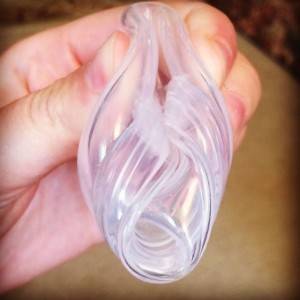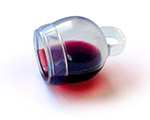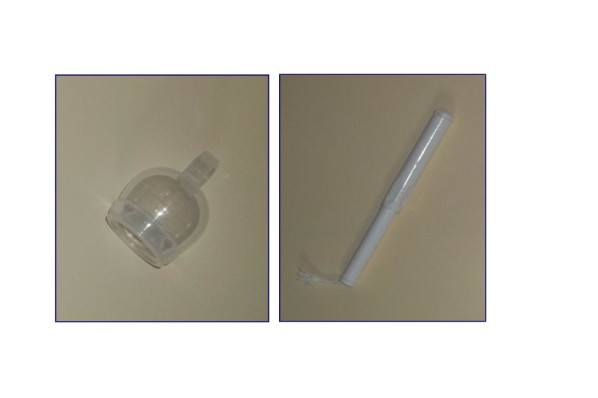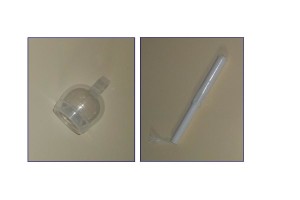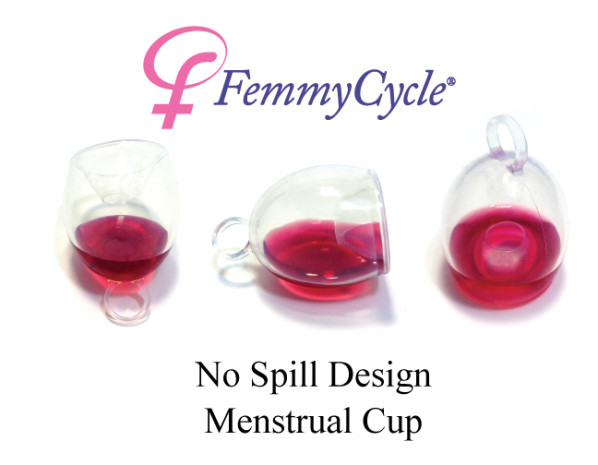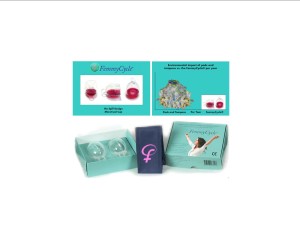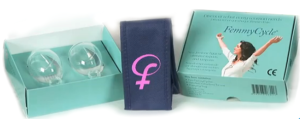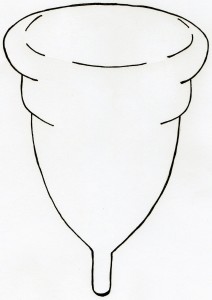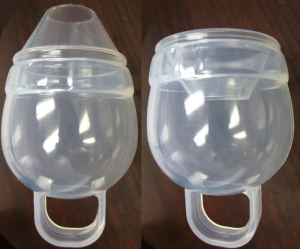RDO Medical UK Ltd had the opportunity to interview FemmyCycle Inventor, Dr. Alfred Shihata.
The following is an article by Leah, who works at RDO Medical UK Ltd.
What started out as a small unmet need for women has grown into a great demand, as countless women are making the switch from disposable menstrual products to menstrual cups. In the health and eco-conscious world of today, women no longer want to use bleached and chemically treated pads and tampons. They are looking for safer, more environmentally and economically friendly options.
As the demand for menstrual cups has increases, new companies are popping up to meet this demand. However, while small improvements have been made, the funnel shaped design has remained almost identical in more than 40 brands of menstrual cups.
FemmyCycle designer, Dr. Alfred Shihata, a renowned gynecologist from Scripps Memorial hospital in San Diego, CA, decided it was time to go back to the drawing board and create a truly physiologically and anatomically accurate cup that would make menstrual cup use even more accessible to woman.
Leah: Dr. Shihata, what drew your interest to the topic of menstrual cups?
Dr. Shihata: Well, about 16 years ago, my team and I invented the FemCap which is a cervical cap. With backing from US government grants, we designed and put into production an innovative barrier contraceptive device a new generation of health conscious women.
We actually had many FemCap users ask if there was a larger FemCap that could be used as a menstrual cup. Of course, the FemCap itself should not be used as a menstrual cup, but it inspired us to take a look at this interesting subject.
Leah: What was your first impressions of menstrual cups?
Dr. Shihata: I was impressed but also a bit confused. We ordered samples from many different manufacturers, and while the concept is undoubtedly better than traditional menstrual products that absorb blood, we were also curious as to why the funnel design is almost identical in the vast majority of menstrual cups on the market.
Leah: You don’t think that classic shape is best?
Dr. Shihata: It’s true that these menstrual cups are functional and work for many women. As a gynecologist and as a designer, I tend to look at things from an anatomical and physiological perspective.
Mittens are simple to produce and keep your fingers warm. But when you study the anatomy of the hand you see that gloves would be a far superior design.
We wanted to create a highly functional cup according to the actual anatomy of a woman. Our goals were simple - a cup that has a high capacity and is still very comfortable. The shape of the cup plays a big role in achieving these goals and that’s how we came up with the notably unique bulbous shape.
Leah: So you reinvented the menstrual cup. Impressive! Can you describe the differences in the FemmyCycle cup as opposed to other cups?
Dr. Shihata: First of all the FemmyCycle does away with the funnel design. Using that shape reduces capacity and makes the cup much longer than it needs to be. So the first visible difference is that the FemmyCycle is more of a bowl shape. This results in a greater capacity in a shorter length.
The wider bottom also has another logical benefit. When a cup tapers out and becomes narrower closer to the entrance of the vagina, it is more likely to be expelled, particularly when you cough or sneeze.
Another obvious difference is the no-spill design. Rather than just relying on a tight fit to stop leaks and overflow, we designed and patented a no-spill neck. This can be tipped, rolled and inclined and no liquids escape until you want them to. This means you are more likely to be able to run, jump, swim, sleep, and just live life without any leaks. It’s also handy that when you remove your full cup, you know the blood won’t splash over the edges of the cup.
Leah: Is it true that the period length could be shortened when using a menstrual cup?
Dr. Shihata: Let’s talk about the suction, or “Pull-Factor.”
We’ve found that the length of the menstruation can be reduced if the blood is drawn out, rather than just waiting it to make its way out at its own pace. We are backing this up with medical studies being conducted on our behalf with our research colleagues at Simons College at Boston MA.
A very light, subtle suction applied to the cervix has a very positive effect on menstrual flow.
That’s one of the main reasons we did not add air holes in the FemmyCycle design —to take full advantage of the suction.
By the way, the second reason for no air holes is simply hygiene. Air holes are notorious for getting clogged with old menstrual blood that is hard to clean. These holes have very little benefit, but have the potential to harbor lots of bacteria. So we did away with them completely.
Leah: When an experienced cup user first looks at the FemmyCycle, it’s clear that this cup is completely different.
Dr. Shihata: All other cups are based off the same design. Interesting fact, that is why they don’t need a patent. Our patented cup is completely different, and we hope it addresses the shortcoming found in other cups.
Several version of the FemmyCycle were tested and we used that feedback to perfect the design.
We now have three different size cups, each diligently designed for maximum comfort. We have a smaller cup, a regular cup, and a shorter cup for women who have a low cervix. Until now menstrual cups were generally quite uncomfortable or even unsuitable for those with a low cervix.
Leah: So the large size is for women over 30 or those who have given birth, right?
Dr. Shihata: Nope! The enlarging of the cervix and the dilation of the vaginal canal during childbirth does mean that women who have given birth usually need a larger cup. But I really have no idea why some cups say that turning 30 years old suddenly makes your vagina larger or looser. I have 35 years in the field of clinical gynecology and I have treated thousands of women. Nothing happens between the age of 29 and 31 which changes the structure or form of the vagina.
Each women is different, some have a tighter vaginal canal, some a wider canal, and we have cups to suit each individual need.
Leah: What is unique about the low cervix version?
Dr. Shihata: As many as 30% of women who have given birth have a low cervix, and some women just naturally have low cervixes. Most of the time a women won’t even realize her cervix is low, but when inserting a funnel shaped menstrual cup the stem of the cup protrudes outside the vagina. Ironically the companies that designed the long stem recommend that it should be cut, making removal even more difficult. The FemmyCycle Low Cervix is wider and shorter than all other cups, and the removal ring is much shorter. This results in a high capacity cup that fits below the cervix and is comfortable and easy to remove.
Leah: Thanks for taking the time to speak to us here at Ethical Family Planning. We really appreciate it.
Dr. Shihata: My pleasure!


